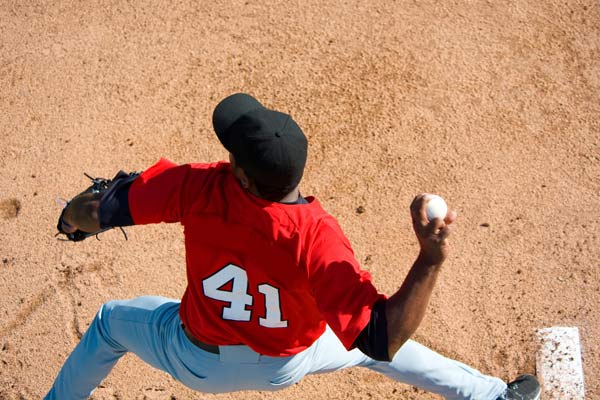
If you have elbow pain with throwing, there are things that a player can do. The most obvious treatment for overuse is rest, especially from the activity that created the injury. Icing the area also helps to reduce soreness and inflammation. And Ibuprofen can also help with any pain. If symptoms persist, it is important to contact a physician for an examination, to determine if X-rays or an MRI scan is warranted, especially if the player lacks full-joint motion.
Overuse and stress-related problems can affect growing parts of bone, not just the soft tissue (muscles, tendons, and ligaments). If the condition is not treated, it could cause deformity of the limb and permanent disability. Usually, a simple "rest cure" approach to these injuries is not enough; even though it allows symptoms to subside, it also creates loss of muscle bulk, tone, flexibility and endurance. A rehabilitation program is essential, but only after the pain is gone and full motion is present. Under some circumstances, surgery may be necessary to correct a problem. After any injury, the athlete should return to play ONLY when clearance is granted by the health care professional providing the treatment.
Overuse injuries, especially those related to the ulnar collateral ligament (UCL) and shoulder are preventable! Symptoms of a UCL injury often include:
- Pain when using your arm in an overhead position (eg, pitching, throwing)
- Soreness in the inside edge of your elbow.
- Minor swelling along the inside of your arm.
- Possible numbness and tingling in your arm.
- Instability at your elbow joint.
When it comes to throwing injuries, there are several tips that athletes should follow to prevent injury:
- Warm up properly by stretching, running and easy, gradual throwing
- Rotate playing other positions besides pitcher
- Concentrate on age-appropriate pitching
- Adhere to pitch count guidelines, such as those established by Little League Baseball (See Part 1)
- Avoid pitching on multiple teams with overlapping seasons
- Don't pitch with elbow or shoulder pain: if pain persists, see a doctor
- Don't pitch on consecutive days
- Don't play the same sport year-round (read more on multiple sport athletes)
- Never use a radar gun
- Communicate regularly about how your arm is feeling and if there is pain
- Develop skills that are age appropriate
- Emphasize control, accuracy and good mechanics
- Master the fastball first and the change-up second, before considering breaking pitches
- Speak with a sports medicine professional or athletic trainer if you have any concerns about baseball injuries or injury prevention strategies
Each year I see many baseball players in my office with elbow problems, and the majority of them are able to return to baseball eventually without needing surgery. The goal of Holland Hospital’s Sports Medicine team is to avoid as many of these injuries as possible, but for the ones that do occur, we have an expert team in place to treat sports injuries and get you back to playing the sport you love.
Bruce Stewart, MD, MBA
Shoreline Orthopaedics
Holland Hospital Sports Medicine